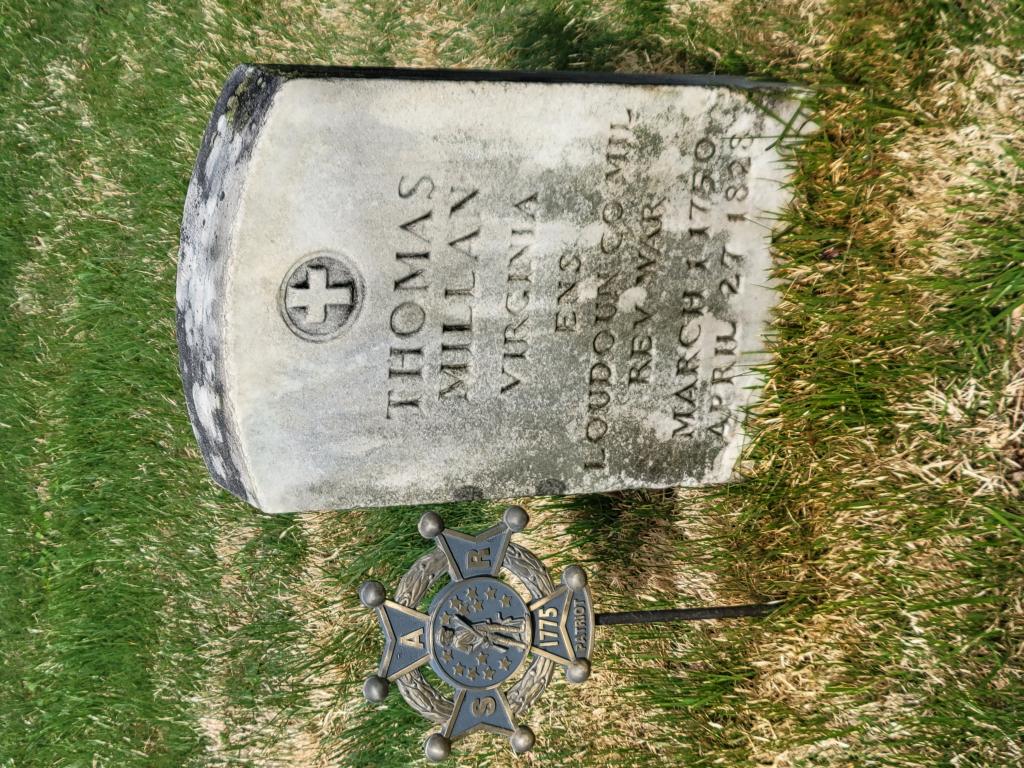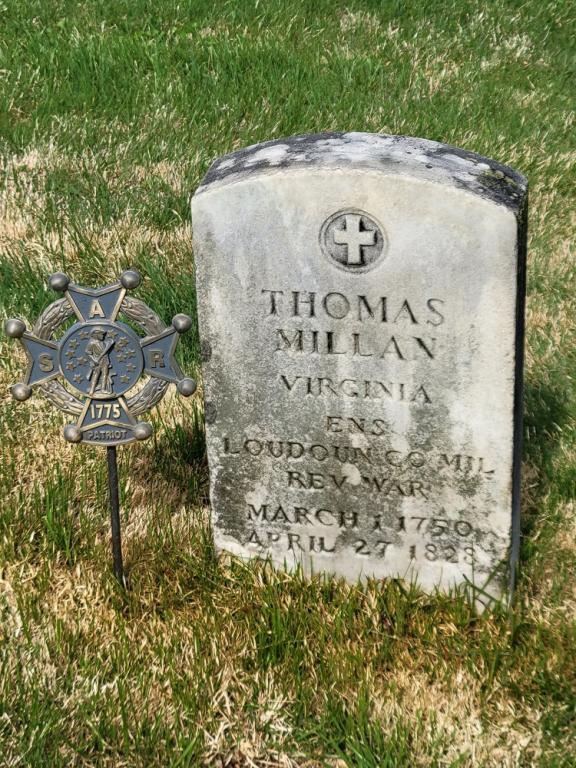Thomas MILLAN
SAR Patriot #:
P-248982
The following information was assembled from numerous sources and cannot be used directly as proof of Qualifying Service or Lineage.
It is considered a research aid and is intended to assist in locating sources that can be used as proof.
State of Service: VA
Qualifying Service: Ensign / Patriotic Service
DAR #: A078915
Birth: 01 Mar 1750 Millstone / Somerset / NJ
Death: 27 Apr 1828 Fairfax / Fairfax / VA
Qualifying Service Description:
- NSDAR cites
- Ens, Capt JAMES CLEVELAND, LOUDOUN CO MILITIA
- FURNISHED SUPPLIES
Additional References:
- NSDAR cites
- GWATHMEY, HIST REG OF VA IN THE REV, pg 549
- HEAD, HISTORY OF LOUDOUN CO, VA, pg 134
Spouse: (1) Elizabeth Shedd; (2) Susanna Summers
Children: George; John; Jane; Susannah; Lyle; Henry; William;
Members Who Share This Ancestor
| Date Approved | Society | ACN | SAR Member Info | Lineage via Child | View Application Detail | |
|---|---|---|---|---|---|---|
| 1965-11-19 | VA | Unassigned | Henry Lyle Millan (93553) | John | ||
| 1983-01-17 | TX | Unassigned | Mason Stuart Standley (121929) | John | ||
| 1983-03-17 | TX | Unassigned | James Jackson Standley (121930) | John | ||
| 1994-10-31 | FL | 207605 | Richard Lyle Pettitt (143554) | John | ||
| 2004-04-20 | VA | 19515 | Richard Farr Millan (162614) | John | ||
| 2023-08-04 | CA | 108412 | James Eugene Standley (227412) | John |
Location:
Fairfax / Fairfax City / VA / USA
Find A Grave Cemetery #:
Marker Type:
Vertical / Military / SAR Stake
SAR Grave Dedication Date:
11 Nov 2010
Comments:
- Grave Photo and GPS provided by Craig Batten, George Washington Chapter, VASSAR
- Photos used with permission of James T. Callender, George Washington Chapter, VASAR
Directions to Cemetery / Gravesite:


